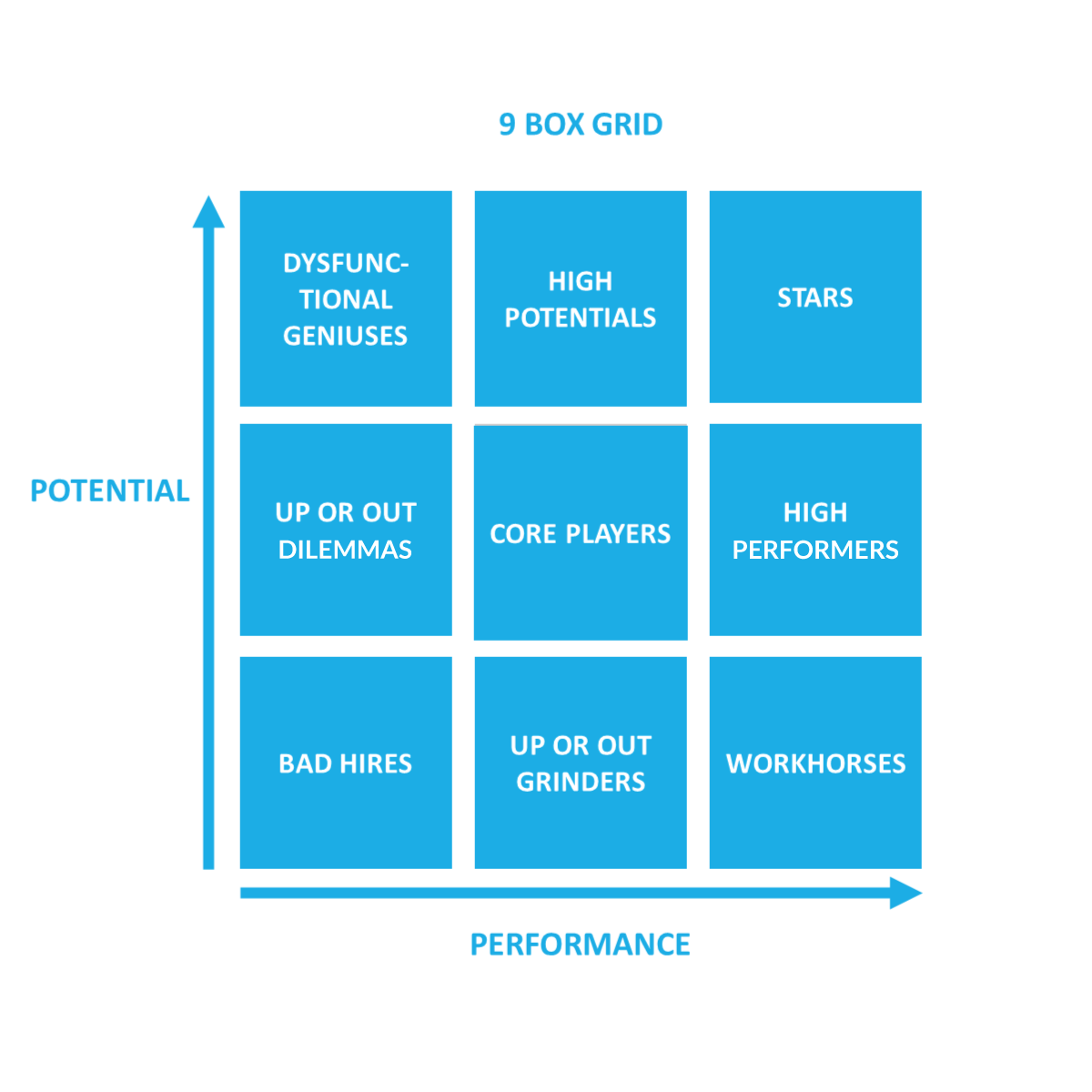
Employee performance metrics are key to tracking how well employees are carrying out their job. HR must have methods to measure the productivity and efficiency of employees. Tracking employee performance metrics benefit both the organization and the employee. We’ve listed 7 key performance indicators for employees that you should track, with examples.
Work quality metrics reflect on the quality of an employee’s performance. The most commonly used metric is a subjective appraisal by their direct manager.
1. Management by objectives
A way to structure the subjective appraisal of a manager is to use management by objectives. Management by objectives is a management model aimed at improving the performance of an organization by translating organizational goals into specific individual goals. These goals often take the form of objectives that are set by the employee and the manager.
The employee works towards these goals and reports back to the manager on their progress. These goals can even be given a certain weight (a number of points). Upon successful completion of these goals, points are awarded to the employee. In turn, managers are able to make goals more tangible and make performance reviews more data-driven.
2. Subjective appraisal by manager
In most companies, employee performance evaluation happens twice a year in performance reviews. Employees are assessed on several criteria, the quality of their work being the most common.
An adaption of this scheme is the so-called 9-box grid. The 9-box grid is based on a 3×3 table in which the employee is assessed on performance and potential. Employees with high performance but low potential are perfect for their current function.
Employees in the top right corner, those who score high on both performance and potential, are often designated to quickly advance through the organizational ranks as they can add more value higher up the ladder.
This 9-box grid is an easy way to assess the current and future value of employees and is a helpful tool for succession management (i.e. you want to promote your high potentials).

员工绩效9宫格
3. Product defects
It is tricky to measure (production) quality objectively. An approach often used by more traditional manufacturing industries would be to calculate the number of product defects per employee or per team. Defect, or incorrectly produced products, are an indication of low work quality and should be kept as minimal as possible.
Even though increased standardization of production processes has rendered this metric almost useless, the approach to measuring employee performance can be applied to other areas, such as the example below.
4. Number of errors
The number of input errors could act as an alternative to the previously mentioned product defects. For example, software development teams could measure errors per thousand lines of code.
The same goes for the number of corrections in written work or the number of bugs in software code. Especially in computer programming, a single error can stop an entire program from working. This can have a major impact on the business, especially for companies who release weekly or monthly new software versions.
The conciseness of a piece of code is another important quality factor. If ten lines of code can produce the same computational result as 100 lines of code, the former is an indication of better quality.
5. 360-degree feedback
360-degree feedback is another tool to measure employee performance. To assess an employee’s score, his peers, subordinates, customers, and manager are asked to provide feedback on specific topics. This feedback often represents an accurate and multi-perspective view of an employee’s performance, skill level, and points of improvement.
6. 180-degree feedback
180-degree feedback is a simpler version of the 360-degree feedback tool. In the 180-degree feedback system, only the employee’s direct colleagues and manager provide feedback. The system is therefore often used by workers who do not manage people and/or do not have direct customer contact.
7. Forced ranking
Forced ranking (also called the vitality curve) is a way of ranking employees by asking managers to make a list of his best to his worst employee, in that order. This way, all the firm’s employees are compared with each other and evaluated on their performance. Each ranking is aimed at improving the workforce. The bottom 10% of the workforce can be fired and replaced by the top applicants from the company’s talent pool, a practice that is claimed to lead to a significant improvement in workforce potential.
However, there has been a lot of criticism on this “rank and yank” approach and most companies stopped the practice, including General Electric, whose then-CEO Jack Welch popularized the practice.

Scan QR code to follow WeChat public account
Never miss any talent management information





